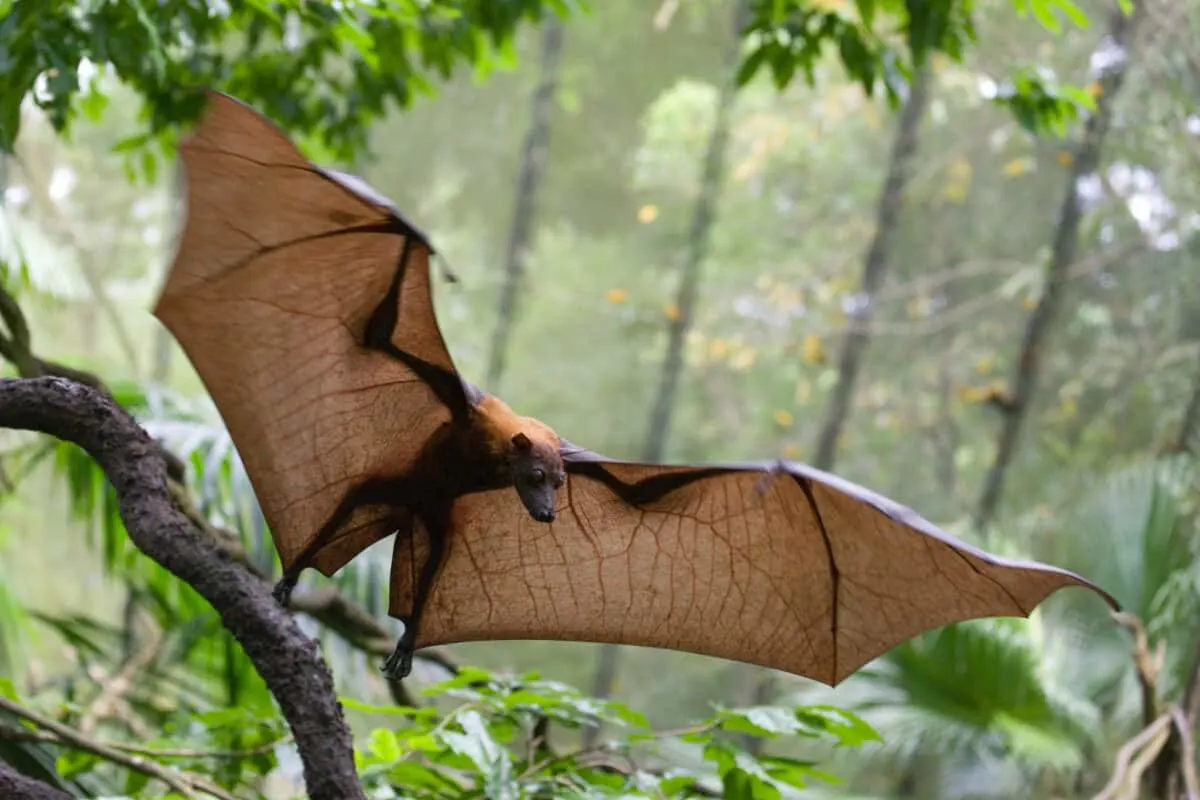The largest bat in the world is the Flying Fox – join us we get to know this fruit-eating creature.
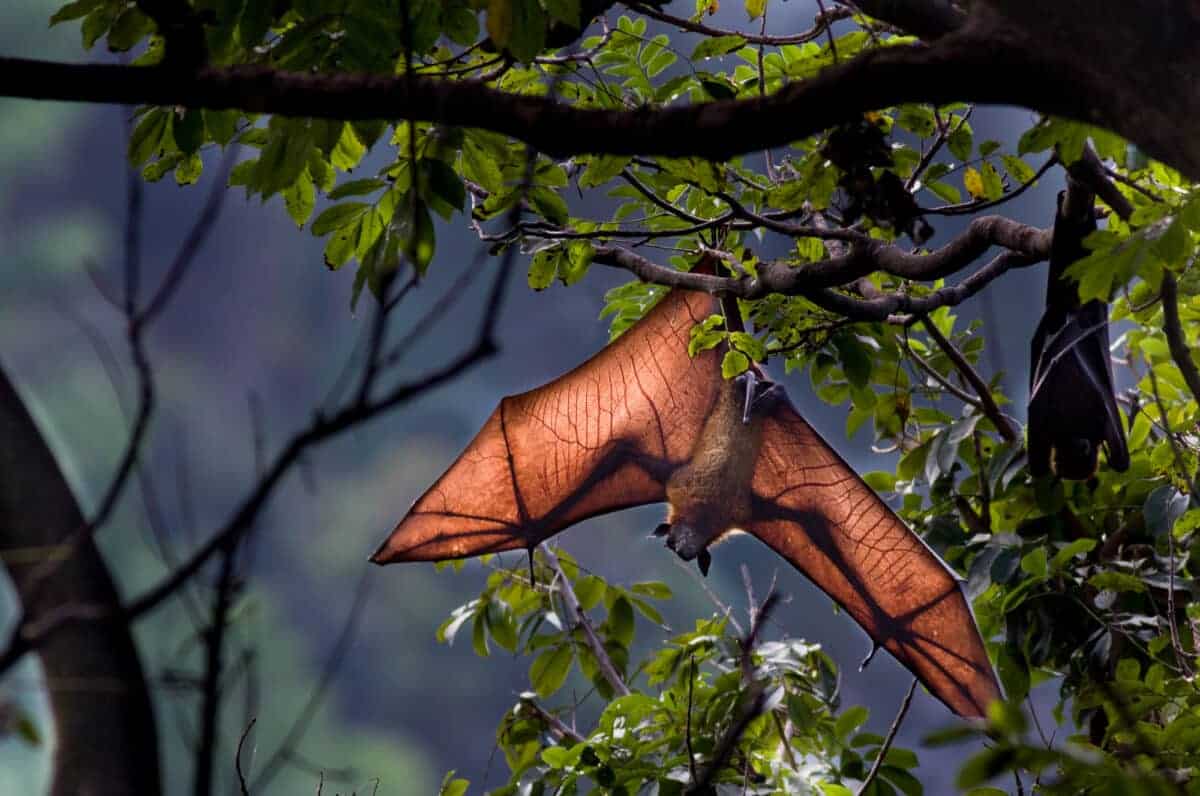
Have you ever seen something so incredible that it left you in awe? If you’re ever lucky enough to observe a flying fox in its natural habitat, brace yourself – because these magnificent animals are truly remarkable.
The largest bat species in the world, the Flying Fox (genus Pteropus), is one of nature’s most impressive creatures. Despite reaching substantial sizes, the Flying Fox is an exceptional flyer and skilled acrobat.
From their wingspan of up to 6 feet to their crucial importance for various ecosystems, we invite you to explore what makes this majestic animal an essential part of our global ecosystem.
Key Points
- Flying fox bats belong to the Pteropodidae family of bats – they are characterized by their unique physical features, which include long, pointed ears, sharp teeth, and large eyes.
- Despite their larger size, these majestic creatures are harmless to humans and do not threaten people.
- They are frugivores and nectarivores, meaning they eat fruit and drink nectar from flowers.
- Flying foxes play a vital role in their respective ecosystems as they are responsible for pollinating flowers and dispersing seeds.
- Sadly, they are viewed as pests in some regions due to their feeding habits, leading to targeted killing efforts.
An Overview
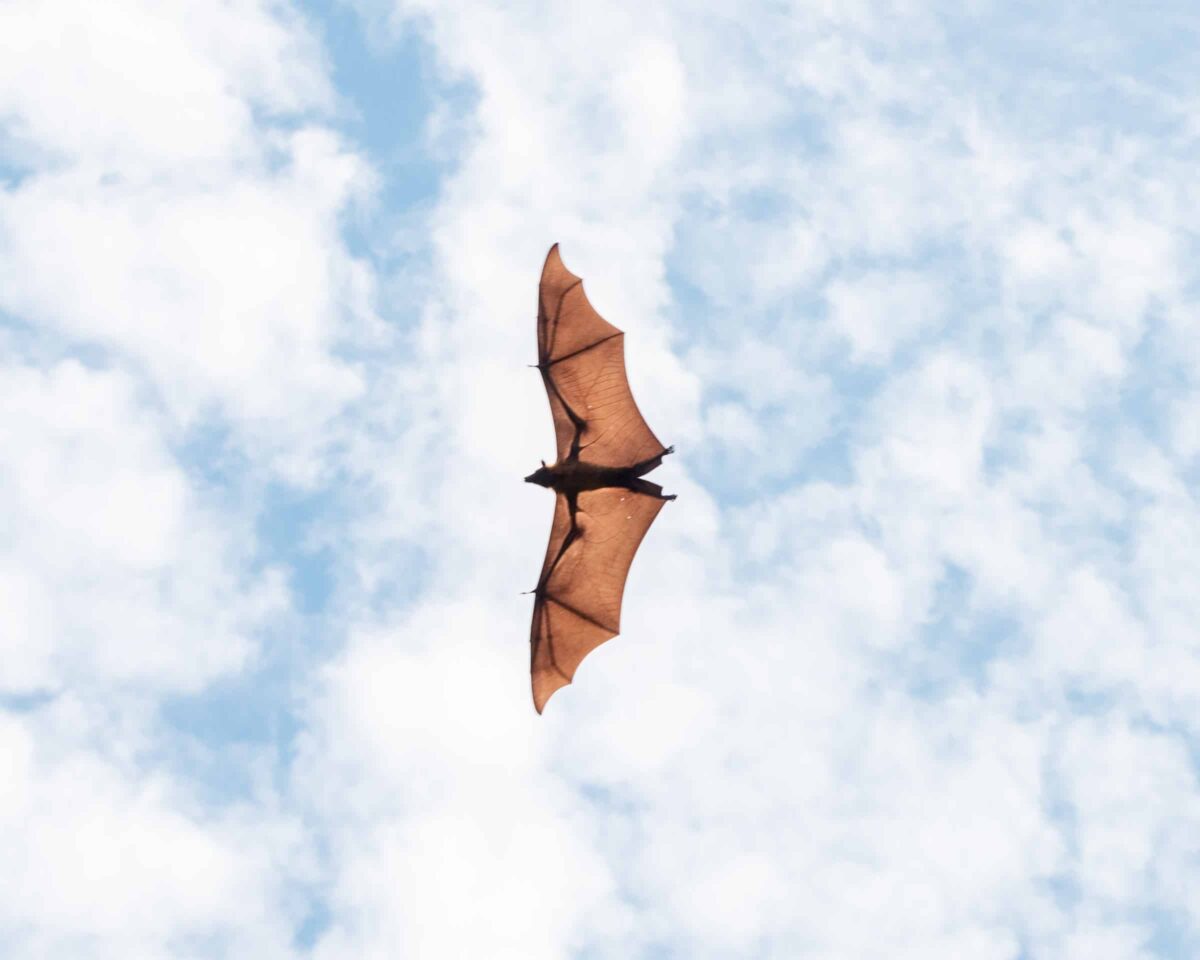
| Trait | Information |
|---|---|
| Weight | 1.4 to 3 pounds, depending on species |
| Wingspan | Up to 6 feet |
| Lifespan | Up to 15 years in the wild; up to 30 years in captivity |
| Diet | Primarily fruits and nectar, but also flowers and leaves |
| Range | Africa, Asia, Australia, and the South Pacific |
| Habitat | Tropical forests and swamps, mangroves, and areas near human habitation |
| Conservation Status | Varies by species, from Least Concern to Critically Endangered according to the IUCN Red List. |
Getting to Know the Majestic Flying Fox
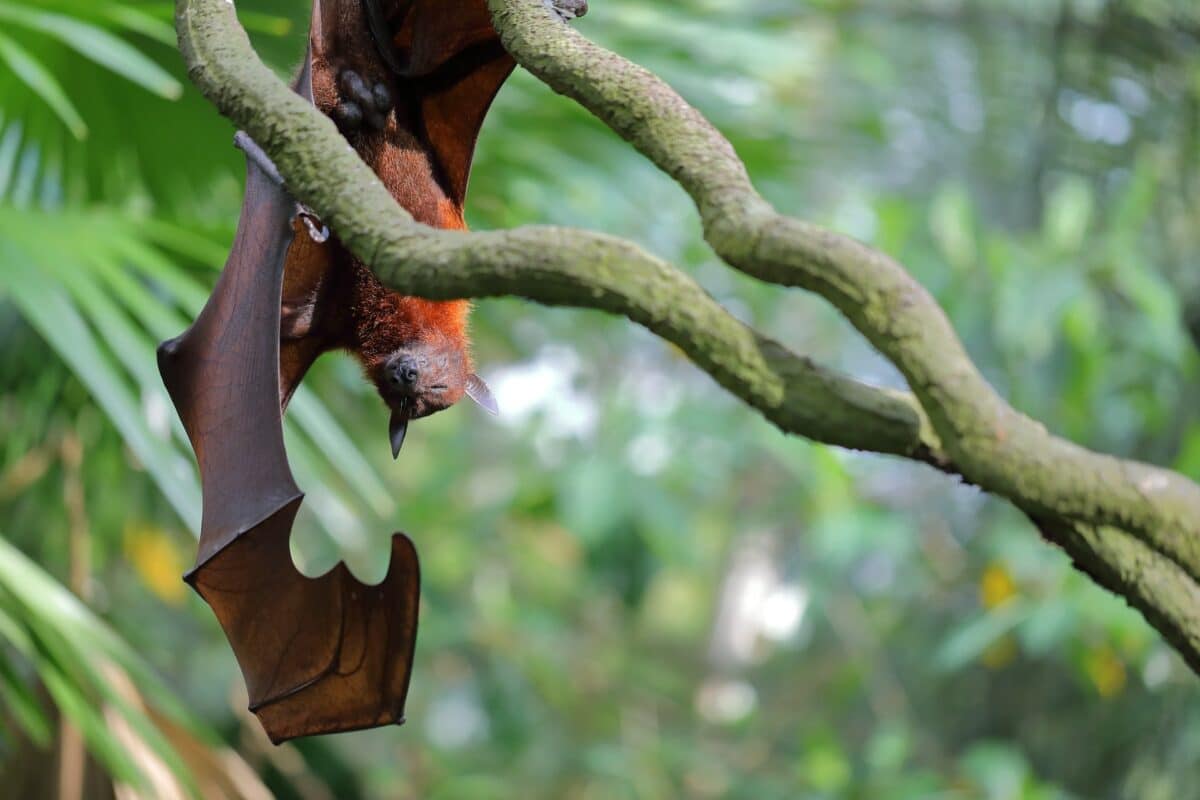
If you have never heard of the majestic flying fox, let me introduce you to the largest bat in the world. These magnificent creatures are a sight to behold, with a wingspan reaching up to 6 feet. Furthermore, their weight can reach up to an impressive three pounds.
Despite their huge size, they’re still extremely proficient flyers. When in flight, they exhibit remarkable speed, capable of soaring through the air at speeds of up to 25 miles per hour. The combination of their colossal wingspan, substantial weight, and impressive speed makes the Flying Fox a true marvel.
They are also known for their large, pointed ears and stunning reddish-brown fur. While they may look intimidating, flying foxes are pretty gentle and play an important role in pollinating plants and dispersing seeds.
So, the next time you see these fascinating creatures, take a moment to appreciate their majesty and marvel at their impressive size.
Read about another record-breaking animal here.
Diet and Feeding Habits
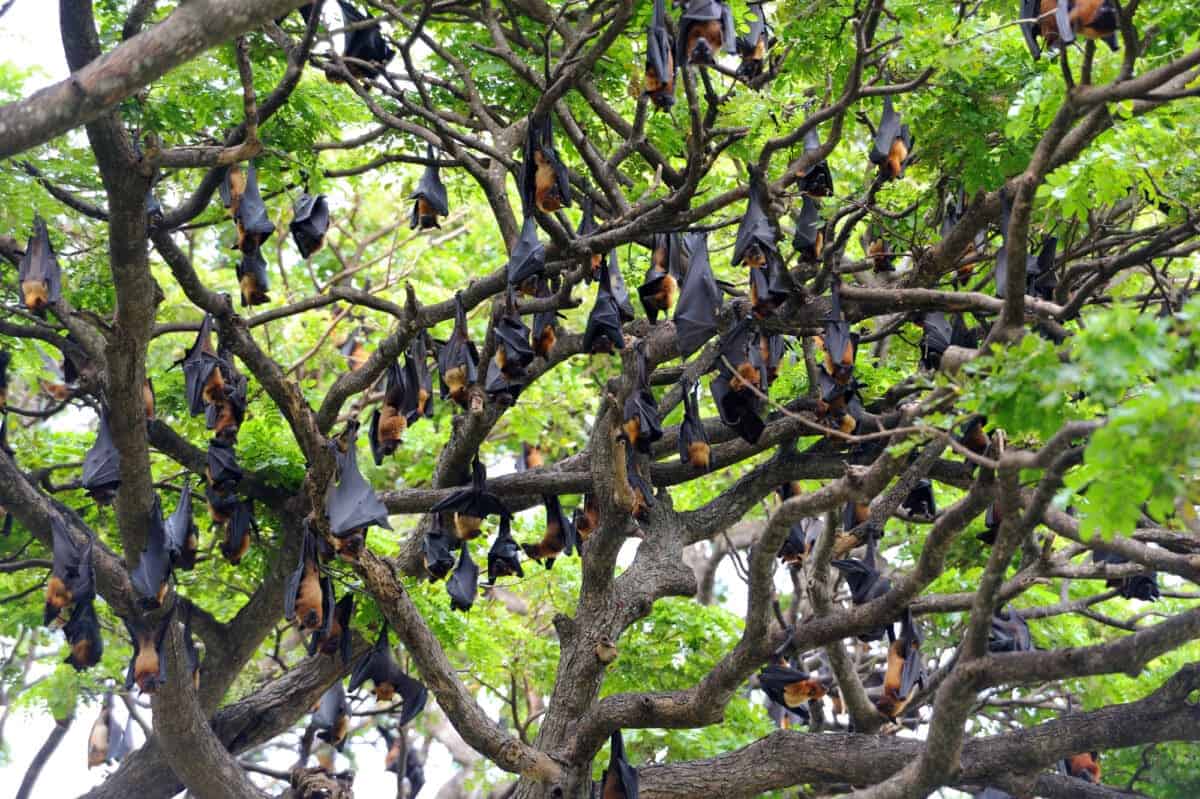
The diet of the Flying Fox primarily consists of fruits, making them true frugivores. They have a remarkable preference for a variety of fruits, including figs, bananas, mangoes, dates, and even durians. However, they also consume nectar, blossoms, and pollen from flowering plants.
Foraging for food is a fascinating process for these bats. They are primarily nocturnal creatures, venturing out at dusk in search of food-rich areas. With their excellent sense of smell and sharp eyesight, they locate fruiting trees, often traveling long distances to find suitable feeding grounds. Their wings allow them to cover significant distances efficiently, aiding their search for abundant food sources.
They can consume a large number of fruits in a single night, typically feasting on about half their body weight or more. This impressive feeding behavior allows them to obtain the necessary nutrients required for their energy-intensive flight and metabolism.
They use their sharp teeth and strong jaws to bite into fruits, often hanging upside down from branches to access the fruit easily. Using their elongated tongues, they extract the juice and pulp from the fruits while spitting out the seeds. This feeding technique also inadvertently makes them crucial seed dispersers, aiding in forest regeneration as they spread seeds through their droppings.
Impressive Adaptations
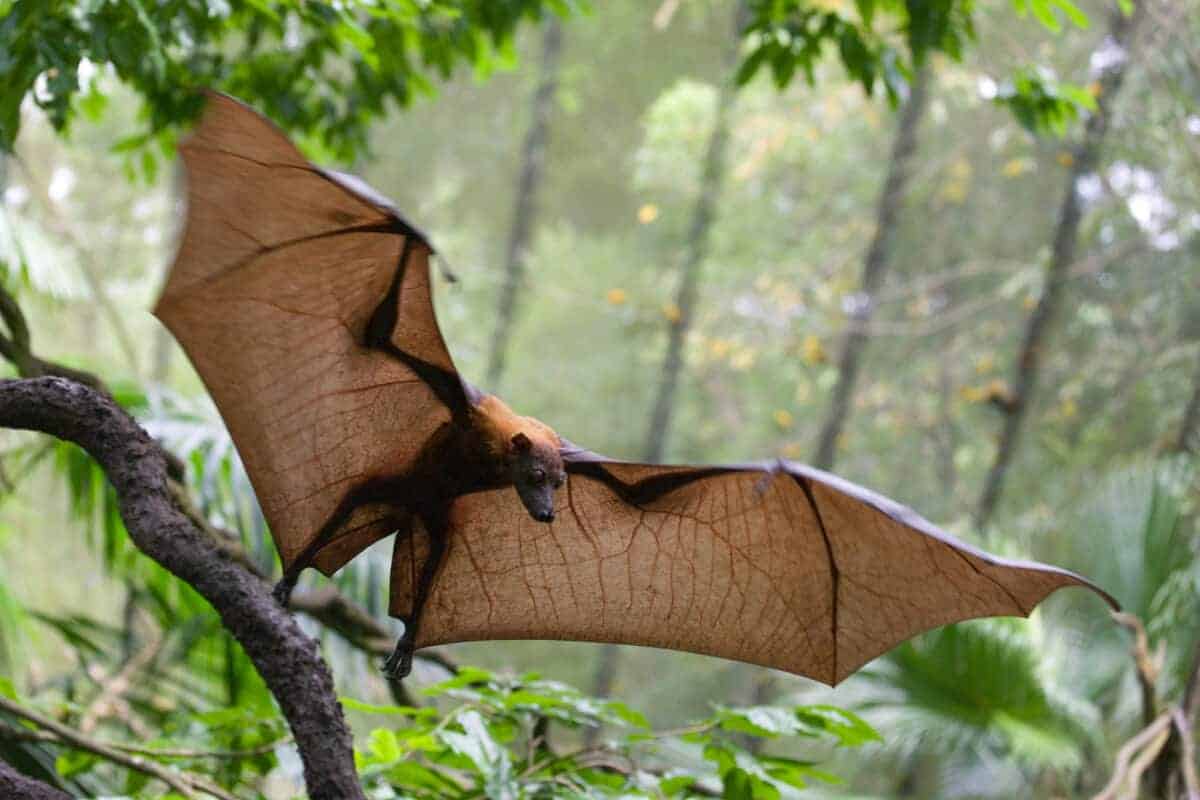
In the lush and diverse habitats of tropical regions, the flying fox stands out with its remarkable adaptations. This magnificent bat has evolved specialized features that enable it to thrive in its unique environment.
Being the largest bat in the world, the Flying Fox boasts an impressive set of wings. With a wingspan of up to six feet, it possesses the largest wingspan among all bat species. These expansive wings allow it to navigate through the dense forest in search of food and roosting sites. Such aerial prowess grants them an advantage in foraging and escaping potential predators.
Their large eyes are one of their vital adaptations. These eyes, with keen vision, are well-suited for their nocturnal lifestyle. Flying Foxes rely on their sharp eyesight to detect the faintest glimmer of moonlight filtering through the dense foliage, aiding in their navigation and hunting for fruits and nectar-rich flowers under the cover of darkness.
Additionally, their elongated tongues play a crucial role in feeding. These tongues, equipped with papillae, assist in extracting nectar from flowers during times when fruit availability may be scarce. This adaptability allows them to diversify their diet and ensures their survival during periods when fruit-bearing trees may be less abundant.
Conservation Status
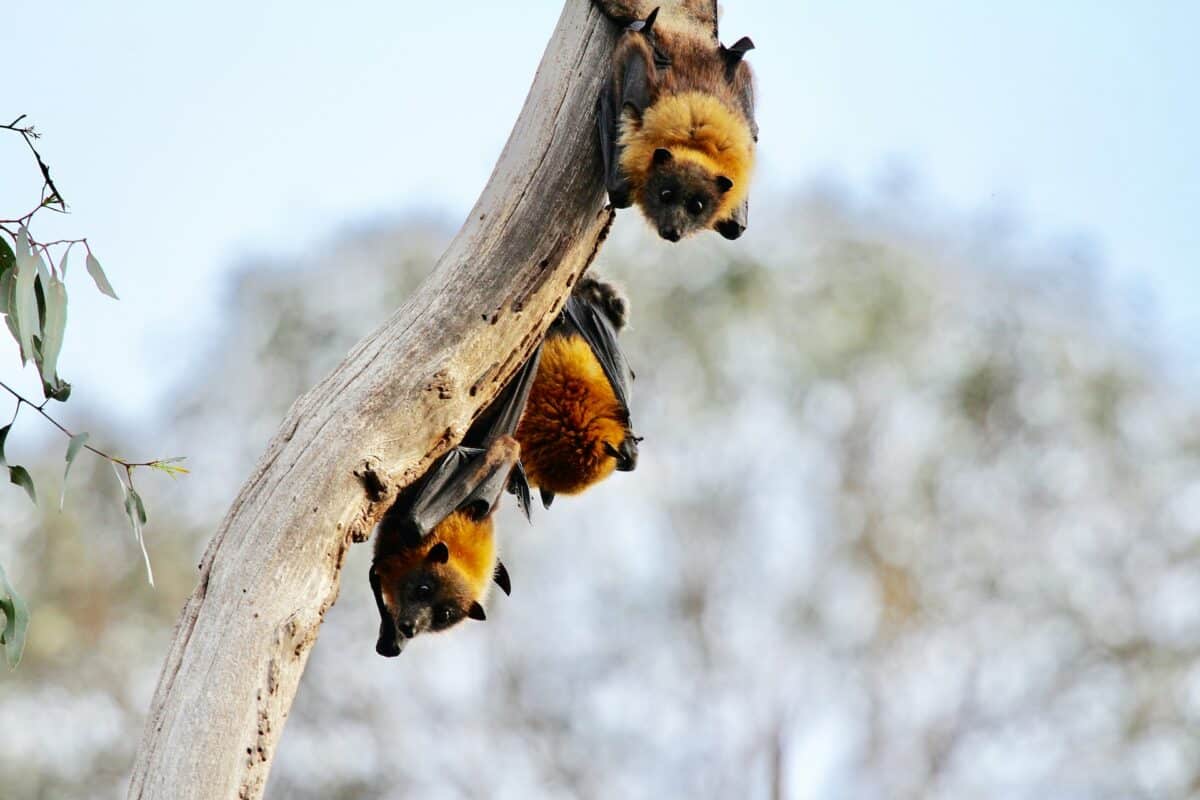
The conservation status of flying foxes vary depending on the particular species, but generally speaking, most are endangered or deemed to be a vulnerable species. There are numerous reasons for the decline in their numbers, but all of them result from human activity – either directly or indirectly.
Habitat loss and fragmentation pose severe threats to their survival. Likewise, deforestation, urban expansion, and agricultural activities encroach upon their natural habitats, leaving them with fewer resources and roosting sites.
In some regions, they are viewed as pests due to their feeding habits, leading to targeted killing efforts. Climate change and extreme weather events also contribute to their vulnerability, disrupting their feeding patterns and roosting behavior.
Supporting organizations and research efforts dedicated to studying and conserving Flying Foxes is one way to make a difference. These organizations work towards implementing conservation strategies, monitoring populations, and conducting research to better understand their needs and threats.
Fun Facts About the Flying Fox
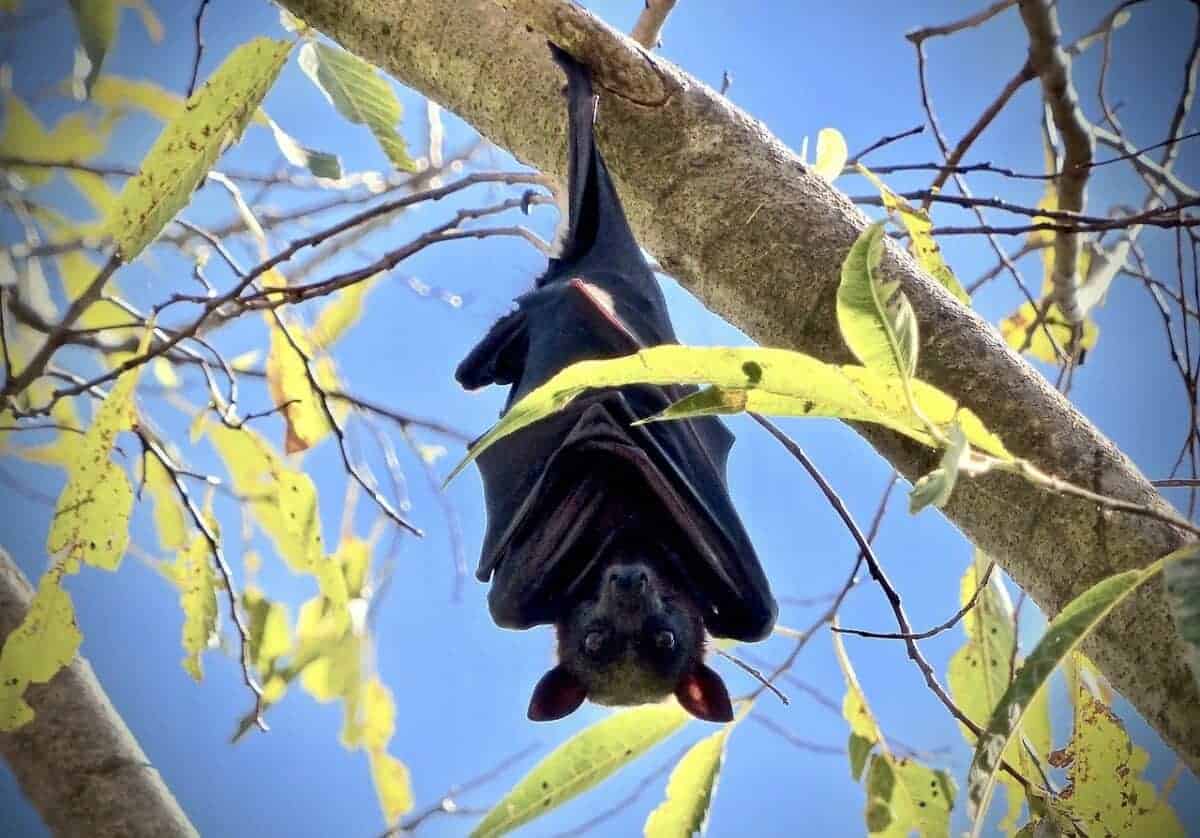
#1 Not Bloodsuckers
Unlike some of their smaller bat relatives, flying foxes are not hematophagous; that is, they don’t consume blood. Instead, they’re frugivores and nectarivores, meaning they eat fruit and drink nectar from flowers.
Unlike many other bat species, flying foxes do not use echolocation to navigate. Instead, they rely on their keen eyesight and sense of smell. Their eyes are large compared to other bats, and they have an excellent color vision which helps them to find ripe fruits and flowers.
#3 Long Lifespan
For a bat, flying foxes have quite a long lifespan. They can live up to 15 years in the wild, and with excellent care, they’ve been known to live up to 30 years in captivity!
#4 Social Creatures
Flying foxes are extremely social animals. They live in large colonies, sometimes numbering in the thousands. These colonies, also known as “camps” or “roosts,” can be very noisy, filled with squawks, squeals, and other communication sounds.
Uncover a bat that’s impressive for the opposite reason – the smallest species of bat.
The Largest Bat in the World: Conclusion
From this blog post, we have seen just how magnificent the flying fox is, the largest bat in the world! This bat isn’t only worthy of our admiration because of its huge size and wingspan, we should also acknowledge how important they are for pollination and seed dispersal.
This majestic creature has so much to offer us in terms of appreciation for nature and its beauty. To wrap things up, we hope this post has been educational and inspirational – intriguing readers to take action to protect these remarkable animals from becoming extinct.
To learn more, visit your local zoo or nature center or research conservation projects near you that are actively protecting bats like the flying fox. Together, let us strive to keep this regal species thriving for generations!
Thank you for reading this article! If you enjoyed this article, you should also take a look at our post about one of the arctic’s most proficient hunters or an underrated hunter that thrives in the savannah.
- Chicago Cat Jumps From 5th Floor of Burning Building and Survives - April 22, 2024
- The Cruelest Contest in the World: Rattlesnake Round-Ups - April 21, 2024
- Rare Footage: Wild Fox and Pet Cat Play-Date - April 21, 2024

